
views
X
Research source
[2]
X
Research source
Completing Credit Counseling

Find an approved agency. U.S. bankruptcy law requires you to complete credit counseling before you file your petition. To find an agency in your area that is approved by the courts to provide this service, visit the Office of the U.S. Trustee's website and review their list. You may be eligible for an exemption from the counseling requirement if there's no approved agency in your area. This usually isn't an issue, however, since credit counselors will meet with you over the phone. Approved agencies typically have websites you can visit so you can get a better idea of the services they offer and their general focus before you commit to one over the others. Once you've chosen an agency, call and make an appointment. Tell them you want the required credit counseling to file for bankruptcy. You will pay a fee for your credit counseling, typically around $50. In some circumstances the agency may waive the fee if you are in dire financial straits and have extremely limited income.
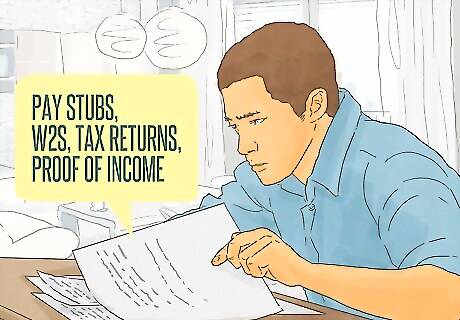
Gather financial documents. You must provide the credit counselor an accurate and up-to-date picture of your finances, so you'll need your most recent account statements as well as pay stubs or other proof of income. You may have been avoiding your mail and allowing "late" notices to accumulate, but once you decide to file for bankruptcy it's imperative that you open all of your mail. You need to know your status on all your accounts, especially those that are past due. If a creditor decides to sue you, your bankruptcy petition acts as an automatic stay on that lawsuit as well as any other collection activities. You'll need the most recent account statements for any credit cards or other lines of credit you have, as well as information about secured loans (such as a car loan) or mortgages. In addition, you'll need copies of your tax returns for the past few years and proof of income such as W2s and pay stubs. It's also a good idea to gather your deeds, titles, or other ownership documents for various assets. Make copies.
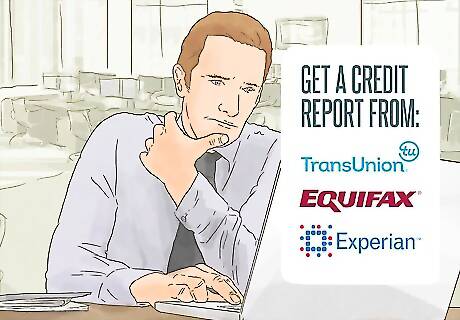
Get copies of your credit reports. You are entitled to one free credit report every year from each of the three major U.S. reporting bureaus. They are Experian, Equifax, and TransUnion. Get all three, since some creditors report to only one bureau. You can get your free credit reports through annualcreditreport.com. This is the only website that provides truly free reports (despite claims to the contrary on other sites). You should order your credit reports at least two months before you do your credit counseling. This allows you time to check the reports for errors.

Meet with your counselor. If the agency is located near you, the counselor may set an appointment for you to come into the office in person. If you're unable to make a trip to the office, you have the option of conducting the meeting over the phone. You'll have to submit financial information and documents to your credit counselor in advance of your meeting. The agency will give you a checklist of documents and information you must provide. You'll need all this information when you file your bankruptcy petition, so gathering it for your credit counseling is good preparation for the filing. After your information and documents are received, a counselor from the agency will get in touch with you to schedule a meeting to go over their recommendations.

Evaluate the counselor's budget and plan. Based on the debt and income information you've provided, your credit counselor will draw up a proposed budget for you, along with a plan for repaying your debt. Your counselor may conclude that bankruptcy is your best option. If they suggest a repayment plan, you're not required to accept it. Any plan proposed by the counselor must be submitted to the court along with your bankruptcy petition. Even if you don't like the counselor's plan, the court may decide to adopt it. Review the budget and plan carefully before you make a decision. Keep in mind that bankruptcy is intended to be a last resort and can have serious financial consequences. If the counselor's plan seems workable, it may be possible to use it to avoid bankruptcy.

Get a certificate of completion. Since credit counseling is required, you must get a certificate from your counselor stating that you've fulfilled this requirement. Your certificate must be filed along with your petition. If the counselor has proposed a repayment plan, this, too, must be filed with your certificate of completion so the judge can review it. In some circumstances, such as if you are trying to prevent wage garnishment, you may not have time to complete credit counseling before you file your bankruptcy petition. If this is the case, you must provide written proof of your reasons for having to file your petition immediately, and you still must complete credit counseling within 30 days of the date you file your petition.
Filing Your Petition

Download the required forms. U.S. bankruptcy courts make available free of charge all forms required to file for bankruptcy. You can download them from the court's website or pick up paper copies at the court clerk's office. There are forms which will work in any bankruptcy court, but you should check the website of the court where you plan to file for any specific, local forms that may be required. You can visit uscourts.gov to find out which court has jurisdiction over your case. You'll want to file your bankruptcy petition in the U.S. bankruptcy court that has jurisdiction over the city or county containing your primary place of residence.

Read the instructions carefully. Each court form comes with instructions on how to fill it out and what information is required. The bankruptcy courts also publish a "pro se guide" which you can download from the court's website. The pro se guide includes step-by-step instructions for completing the required forms, as well as copies of the forms themselves so you can follow along as you read the instructions. You also may be able to find checklists that you can use to gather your documents and information before you begin filling out your forms. Keep in mind that when you fill out and sign your forms, you'll be doing so under oath with penalties for perjury if any information is willfully false, inaccurate, or incomplete. You also risk having your petition dismissed. For this reason, don't start filling out the forms until you are absolutely certain that you understand the information that each section of the form requires.

Consider getting self-help books. If you're confused by the instructions and guide published by the court and don't have confidence in your ability to complete everything yourself, you might consider buying a step-by-step guide to help you. Look for a guide that was published or updated within the last year or so, as bankruptcy laws and court rules can change frequently. Read the biographies of the author or authors of the book. Make sure any book you choose was written by attorneys with extensive experience in bankruptcy law. If you can't afford to buy such a book, check your local library. Most libraries have legal sections that include many "do it yourself" titles. If there's a particular book you're interested in that your library doesn't have, ask the librarian to order it for you.
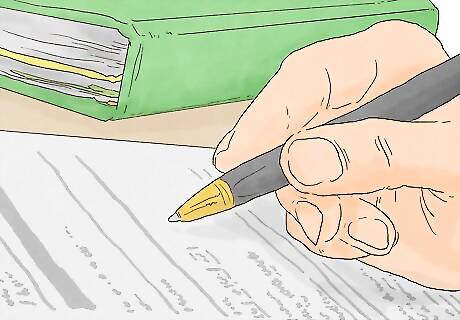
Complete your forms. Gather all the documents and information you'll need, and start filling out the forms. You'll have to provide information about all of your debts, as well as your income and assets. If you're filing joint bankruptcy with a spouse, you'll need their information as well. For privacy reasons, you should not enter your full Social Security number or account numbers on court documents. Once filed with the court, they would become a matter of public record and could be accessed by anyone. Your full Social Security number will be required on only one form. Elsewhere enter only the last four digits. You should also enter only the last four digits of any of your account numbers. The main form you must complete is the eight-page petition. This form is fairly self-explanatory, although it may require some digging to find the information necessary to answer each question completely. You might consider hiring a petition preparer. These professionals are not attorneys and cannot advise you on your case. Nonetheless, they are skilled bankruptcy preparers and can ensure your petition and other forms are completed without mistakes that might result in the delay or dismissal of your case.

Take your forms to the clerk's office. When you've filled out all required forms completely and accurately, sign and date them, and then make a couple of copies of each. To initiate your bankruptcy proceeding, file the originals with the clerk of the bankruptcy court that will handle your case. When you file your paperwork you'll have to pay a filing fee of $335. You have three options in paying the fee: you can pay it in full when you file your petition; you can fill out a form to set up installment payments; or a Chapter 7 filer with an income less than 150 percent of U.S. poverty guidelines may apply to have the fee waived. Filing fees can be paid using a certified check or money order. You can also pay the clerk in cash, but you must have the exact amount of the filing fee, as court clerks don't keep cash on hand and cannot make change. Each bankruptcy court has a "pro se clerk" who is there specifically to answer questions from people who are filing for bankruptcy without an attorney. A pro se clerk can answer questions about forms or court procedures, but he or she cannot give you any legal advice about your case.

Have the appropriate parties served. If particular circumstances apply to your situation, such as eviction or wage garnishment, you may have to provide notice to those involved that you have filed for bankruptcy. Such notice requirement is satisfied by having a U.S. marshal hand-deliver a copy of your petition to the judgement creditor or to your landlord. Make sure a proof-of-service form is filed with the court. It may also be possible to have the appropriate parties served by mailing a copy of your petition by certified mail and requesting a return receipt to prove delivery. Ask the court clerk about appropriate methods of service for your situation. Ask, too, about related fees. If you're required to serve notice of bankruptcy to anyone, there may be an additional form you must fill out and submit to the court with your petition.
Attending Your Creditors' Meeting

Receive your notice from the court. Once you've filed your petition, the court will send you a notice in the mail with a date, time, and location for a meeting with your creditors, known as a Section 341 hearing (named for a part of the U.S. Bankruptcy Code). Your creditors may not actually come to this meeting. Typically it will be just you and the trustee (the court officer in charge of your case). The meeting provides an opportunity for the trustee (and any creditor who might care to attend) to ask you questions about your debts, income, and assets. The trustee is not a judge (although trustees often are attorneys), and there won't be a judge present at your meeting. However, you will be under oath when you answer the trustee's questions. The hearing typically is held in a meeting room in a government office building. It won't be at the courthouse.

Prepare for the hearing. Before your meeting takes place, organize the documents you'll take with you such as your petition and related forms. Study these forms carefully so you can answer the trustee's questions. Bring your Social Security card and two forms of government-issued identification. Bring copies of all paperwork you've filed with the court, as well as any documentation that supports the information you included in your petition and other court documents. Organize your documents, and prepare carefully for the meeting. Failure to do so can delay your bankruptcy by necessitating a second meeting.

Send required documents to your trustee. At least seven days before your creditors' meeting, you must send your trustee copies of your most recent tax return, as well as pay stubs or other proof of income. Your meeting notice will provide information about the documents that must be sent and the address to which you can mail them. Black out all but the last four digits of your Social Security number wherever it appears on the records you send.

Appear on the scheduled date. Make sure you show up prepared and on time for your creditors' meeting, or your case may be dismissed. If you're unfamiliar with the location, you may want to make a dry-run the day before so you know where you're going and aren't pressed for time. Even though it's not a court hearing, you still want to make a good impression. Dress conservatively in neat, clean clothing. There's no need to wear a business suit; show up in something you'd wear to a job interview. Keep your paperwork organized carefully so you don't delay matters by shuffling through papers to find what you need. Creditors' meetings are public proceedings. It's typical to have several other creditors' meetings scheduled for the same meeting room at the same hour. There may be other debtors waiting their turn with you.
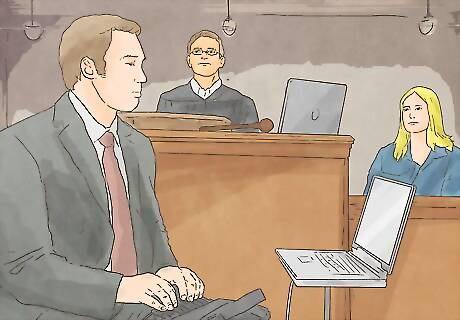
Answer questions from the trustee. When the trustee calls your name, you'll be sworn in and asked a number of questions about your bankruptcy. Specific questions can vary, but the general thrust will be to ascertain that you have been truthful and accurate in your court filings. Remember that you are under oath. If anything has changed since you filed your petition, let the trustee know. S/he may require additional documents to support your statements. Stick to the facts, and answer the trustee's questions directly and concisely. If you don't know the answer to a question, simply say "I don't know." If you don't understand a question, ask the trustee for clarification before you answer. This way you'll avoid giving the wrong information because you misinterpreted a question.
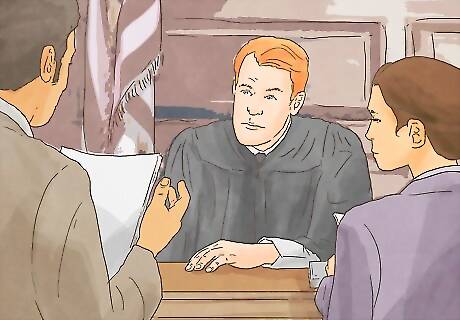
Wait for the trustee's decision. Your creditors' meeting will be concluded once the trustee has all the information needed. If the trustee asks a question that you can't answer or that requires additional documentation, the trustee may finish the meeting at a later date to give you time to get the necessary information. Even if the creditors' meeting is concluded, this doesn't mean your debts will be discharged right away. Your creditors will have 60 days to object to your discharge. During that 60 days you must attend a court-approved financial-management course and file a certificate of completion. If 60 days pass without any objections being filed and you complete the required course, you'll receive your bankruptcy discharge.




















Comments
0 comment